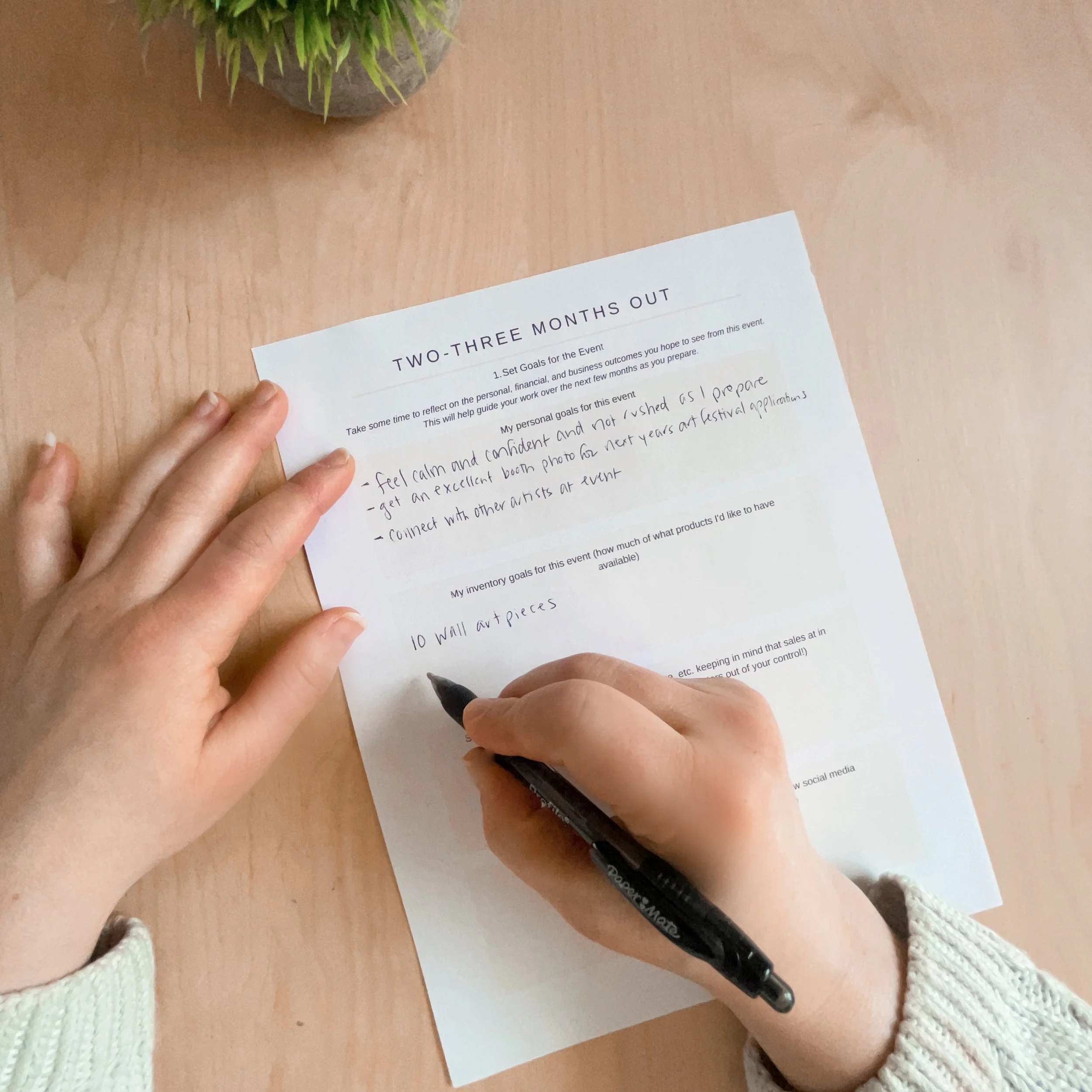Five Tips for Artists and Makers Planning for Their First Art Fair
It’s never to early to start preparing. So you got accepted to your first art festival–congratulations! You may be thinking–now what? The moment to start with event prep is the moment you find out it’s happening, whether several months in advance or a few weeks.
In addition to making inventory for the event, take time to envision what you want your booth to look/feel like, order marketing materials like business cards and a sign, and consider ways to diversify the range of items you can offer.
I created a planner and workbook exactly for planning out the months, weeks, and days before your big event, which you can download here.
Know Your Audience. Research the event beforehand to get a good sense of who will likely be attending. Over time of doing different art fairs and events, I’ve learned that the best way to do this is to ask other artists who have done the event before. If you don’t know anyone, look up who has participated in the past: do you follow each other on social media? Could you send them a DM introducing yourself and asking about their experience at the event?
Don’t know anyone? You can also pour over the website for the event (which often lists the attendance numbers from previous years) as well as a Google map of the location. Is the event held in a busy downtown area where you will get casual passersby who would probably need a lower-cost entry point to your work? Or is it held in a specific, art-fair-only location where folks need to make a concerted effort to find it, and therefore are more likely to be in the market for larger art works?
Put systems in place to stay organized. Go into the event with a good way to keep track of your sales, a place to record all your expenses related to the event, and a way to collect email addresses from interested folks. Don’t forget to get cash for change, update your point of sale app, and charge your phone. It’s so easy to get flustered on the day of the event–I almost always find myself scrambling to connect my card reader and make sure my checkout system is set up right while my first customer looks on–so the more prepared you can be before that first customer wanders into your booth, the better!
Take care of yourself. This one is so easy to let slip! I can’t tell you how many times I’ve been five hours into the first day of an art sale and realized my stomach has been growling for lunch for three of them. My favorite go-to self care items to have on hand are chapstick, protein bars, a bubbly water, and a friend on call to bring me a coffee mid-morning. Yours might be completely different, but you get the idea. Remember the small, creature comforts that will keep you energized and more able to connect with your potential customers and enjoy yourself.
Have fun and don’t take yourself too seriously! As a new vendor, art fairs can be intimidating and exhausting, but there is no better place to connect with other artists, meet new and existing fans of your work, and showcase your art. Take time during a quiet period of the event to visit with your booth neighbors and wander through the other booths for inspiration and ideas of how others handle events like these.
As for not taking yourself too seriously, this is something I am always having to practice, because I almost always have some sort of mishap at any given art fair. There is always some weather event, tent issue, or moment when all my weavings decide to blow away on a perfectly-aimed wind gust. I spent the entirety of the second day of an art fair last year holding onto my tent in high winds, praying it wouldn’t snap in half. Even if it’s frustrating or embarrassing in the moment, I try to look at these things with levity and remember it will make a good story to tell. So far, everything has turned out okay with my dignity (mostly) in tact, even if it didn’t feel like it would in the moment. Take deep breaths and remember even a difficult event will be over before you know it, and you’ll have that much more experience under your belt for the next one.
For more in-depth planning for in-person art events, download the Event Planner!




